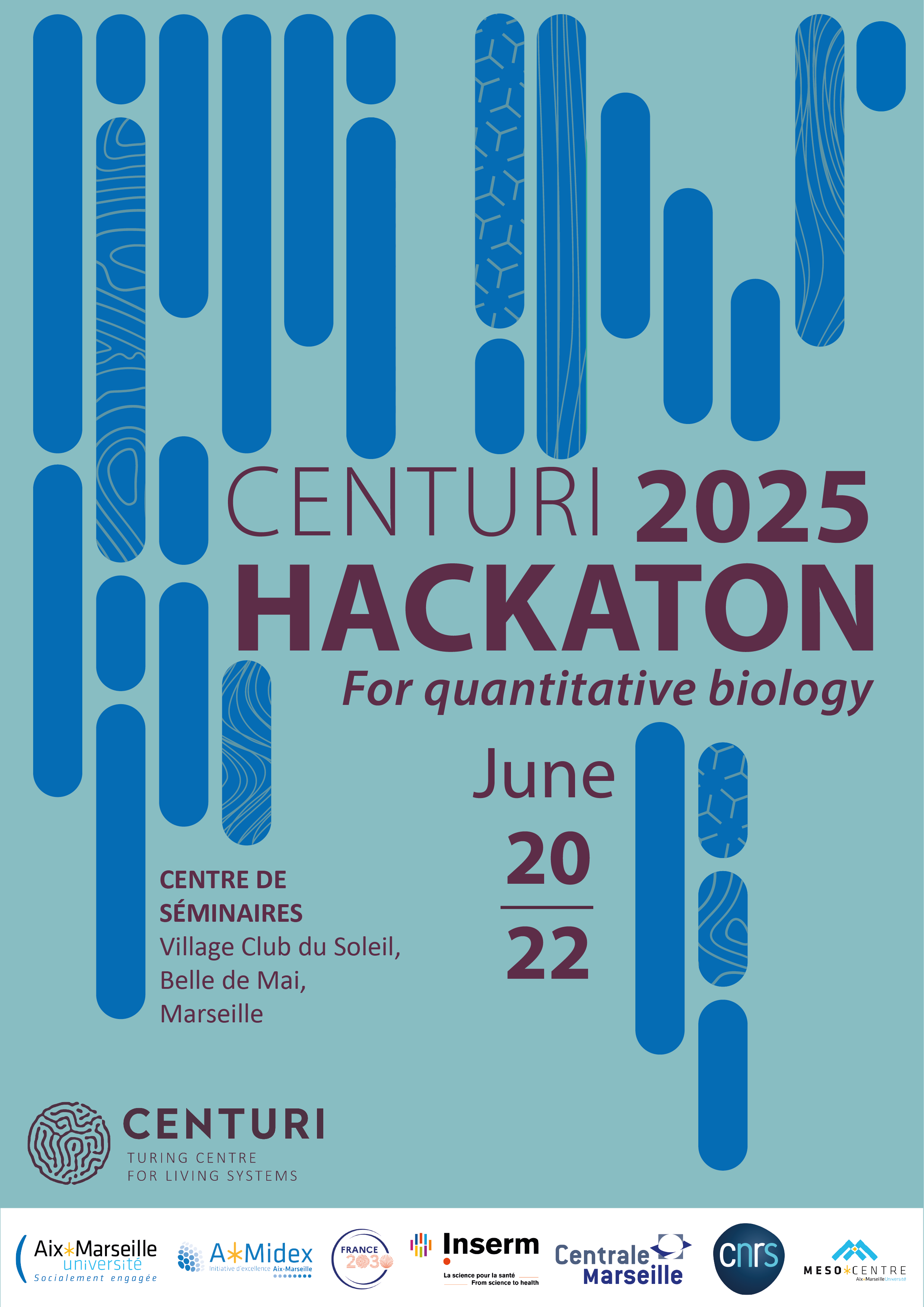CENTURI Hackathon
2025
For quantitative biology
Centre de séminaires
Villages Clubs du Soleil, Belle de Mai, Marseille
What is the CENTURI Hackathon?
The CENTURI Hackathon is a fast-paced, two-day event focused on coding, engineering, and idea-sharing at the intersection of Computer Science and Life Sciences. The event is open to students, postdocs, developers and researchers interested in applying or improving their coding skills through collaborative projects. We encourage applicants from a variety of backgrounds—biology, mathematics, or even non-scientific development—to join in!
This year again, 36 participants will be selected and divided into 6 different projects. Each project focuses on technological bottlenecks arising from the CENTURI community with challenges ranging from computer vision, deep learning, applied mathematics and modeling.
CENTURI will cover accommodation and meals for all participants. Thanks to the support of amU Mesocentre Cluster, the hackathon will provide 10000 hours of GPU and CPU time to support the computation needed for the projects. To reduce the impact of no-shows on the project teams, registration requires a small commitment fee of 60 euros.
Curious about the previous editions? Find out more about the 2022 Hackathon, the 2023 Hackathon and the 2024 Hackathon here!
Registration are open from April 10th.
Powered by

Important dates:
- April 10th, 2025: Registration opening
- May 8th, 2025: Project list reveal and selection by registered participants.
- May 30th, 2025: Registration deadline
- June 20th, 2025: Hackathon kick-off
Participants will work in groups of 6-8 people on various projects in a variety of topics:
- Data visualization and interactions
- Computer vision
- Data mining
- Robotics & Computer assisted microscopy
- Modelling
The projects

Organising committee:
- Philippe Roudot
- Léo Guignard
- Pauline Becherel
- Rémi Wojciechowski
- Mélina De Oliveira
- Marlène Salom







